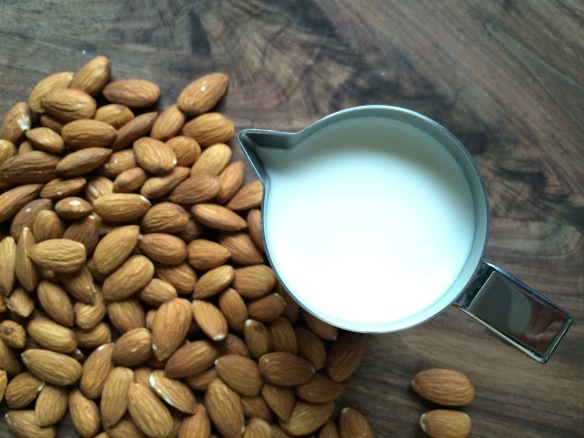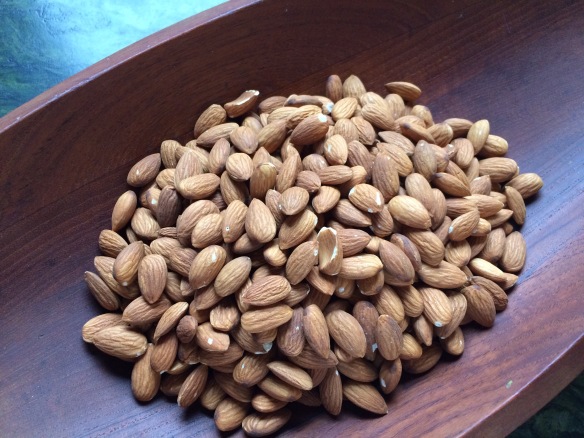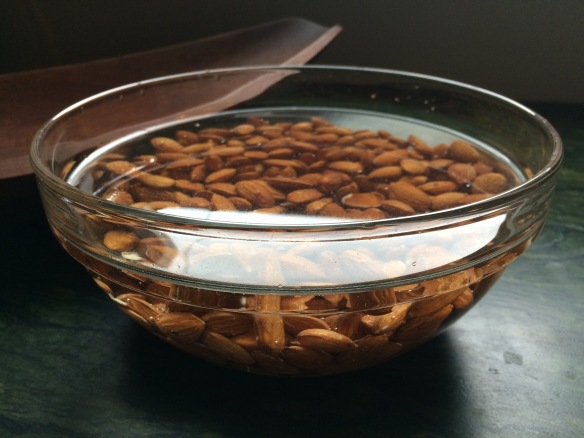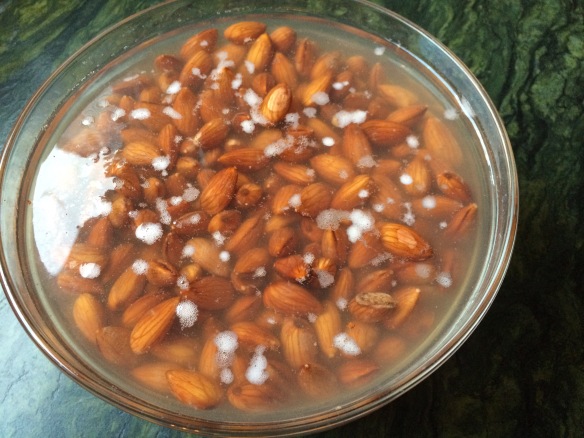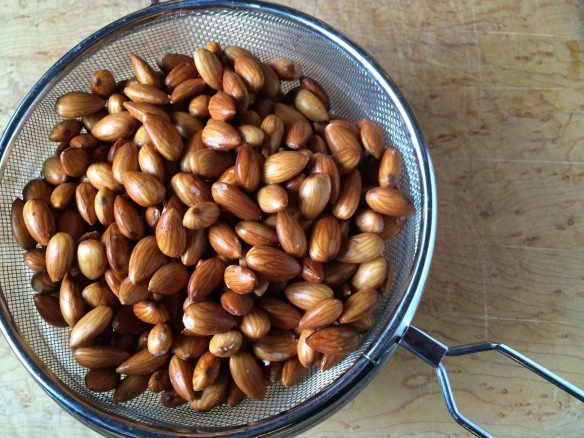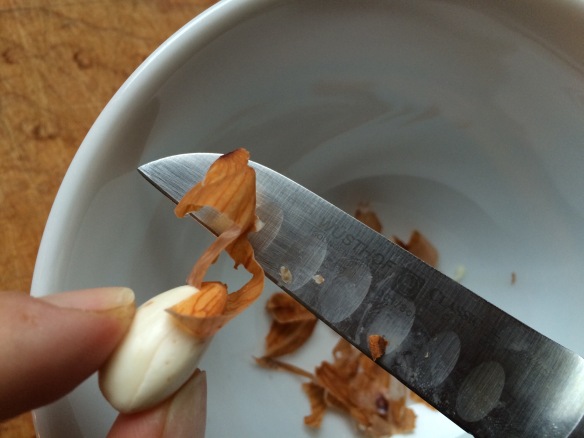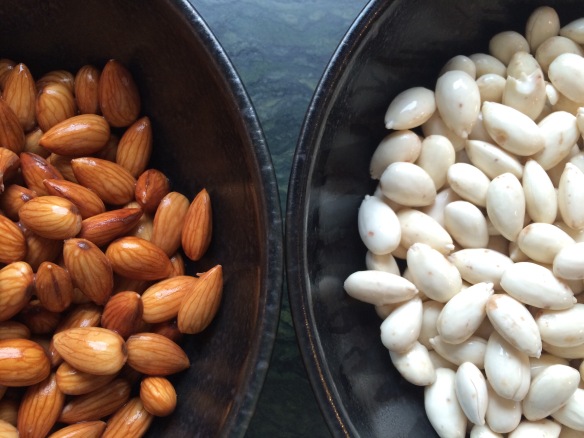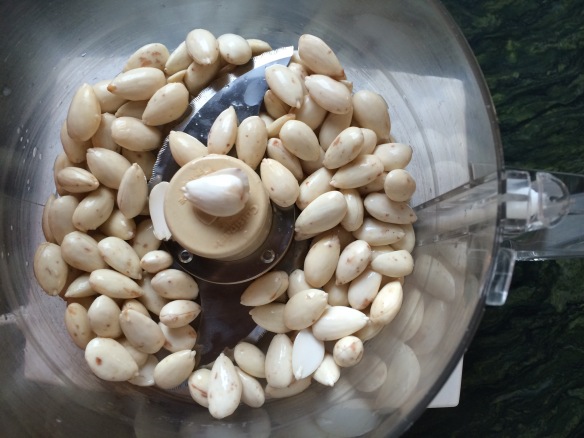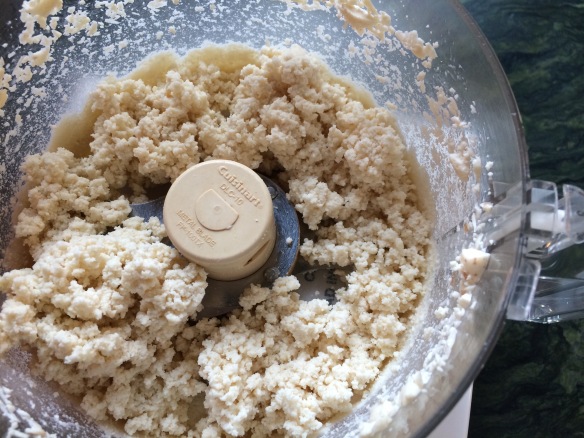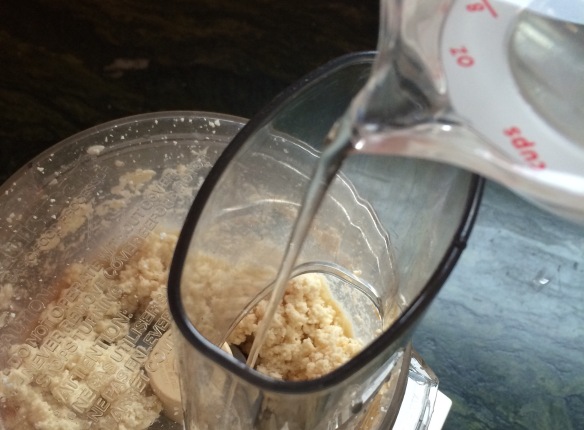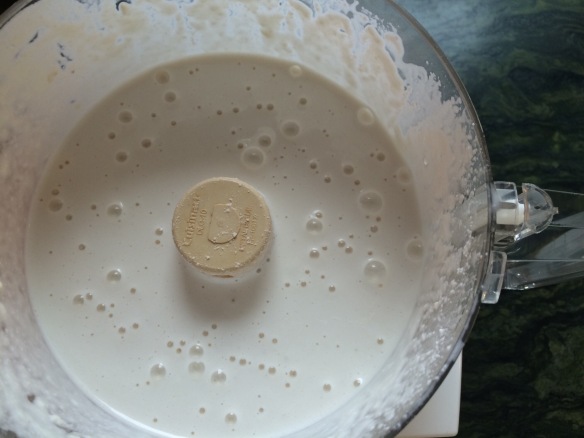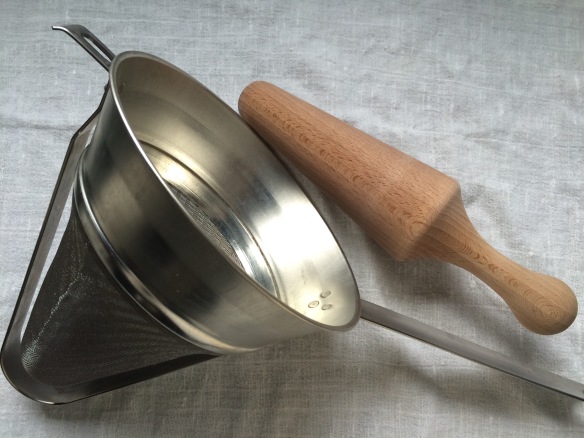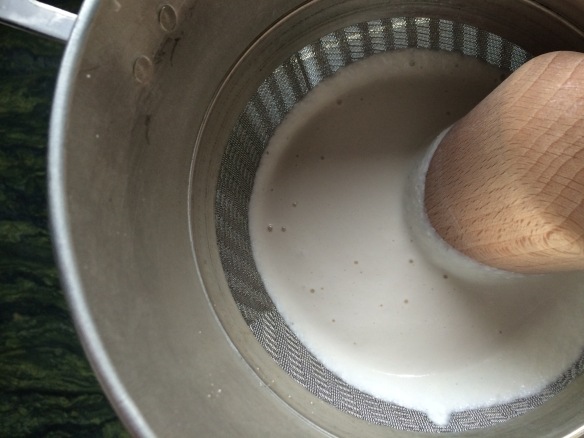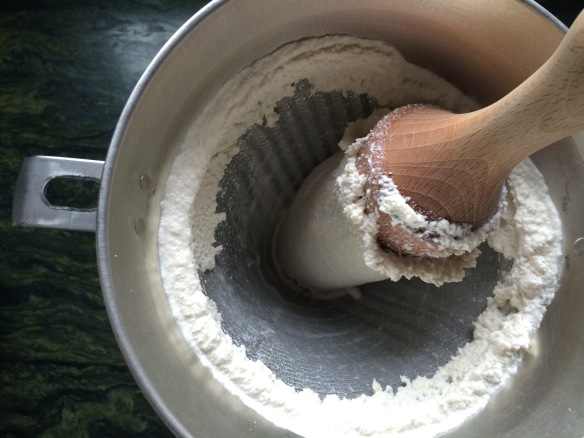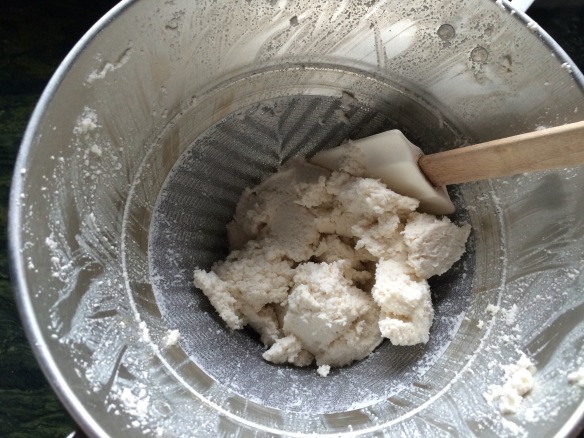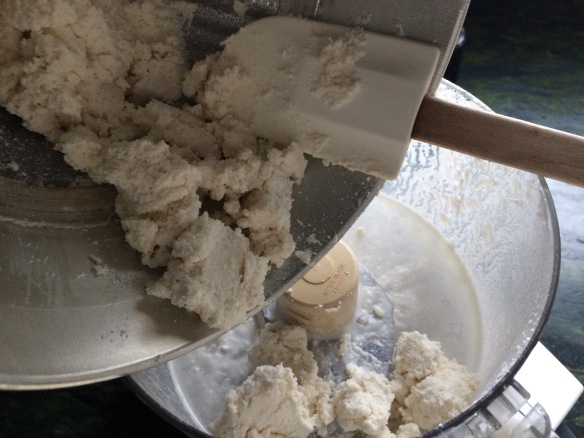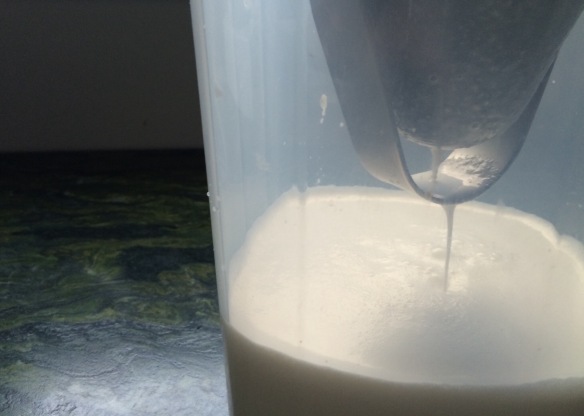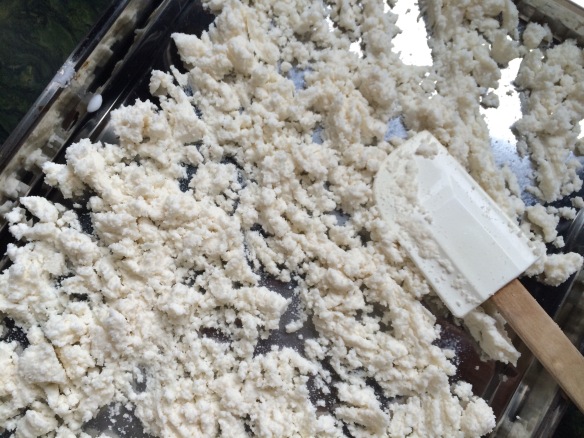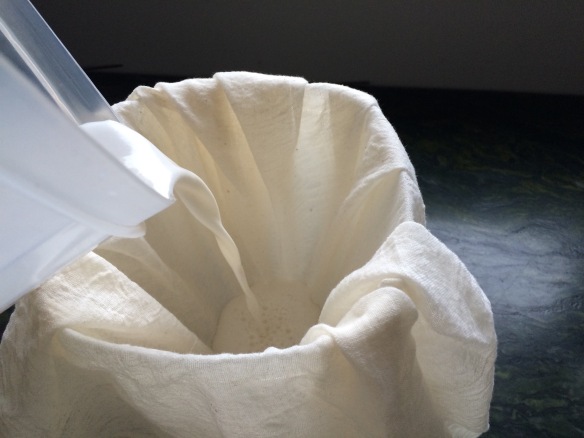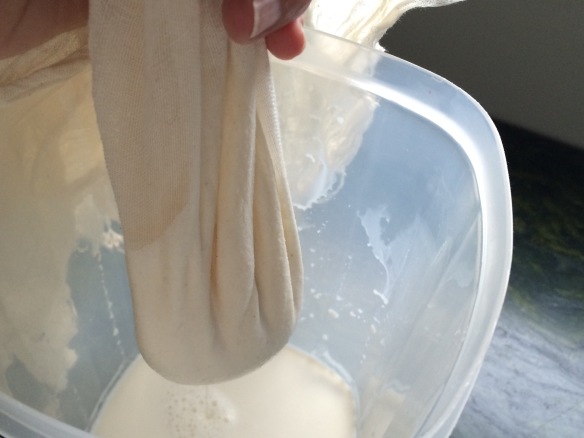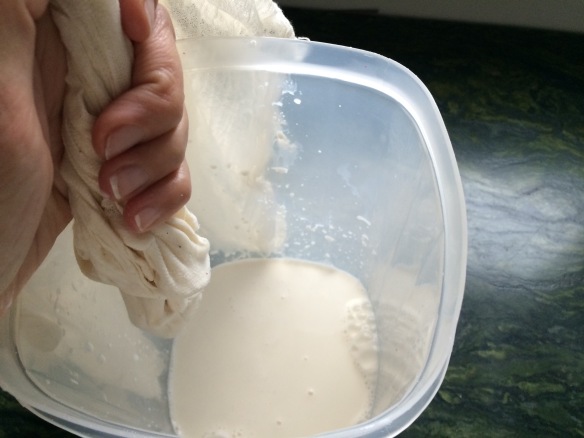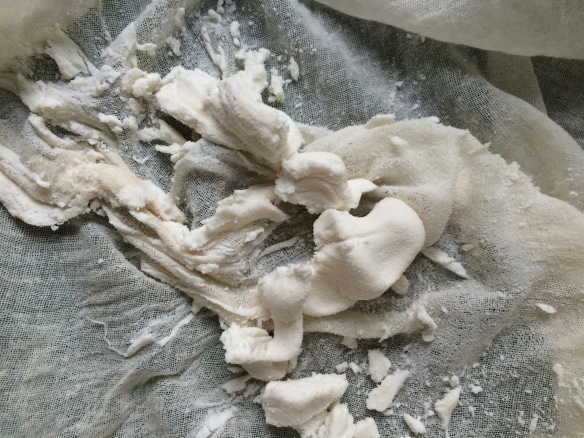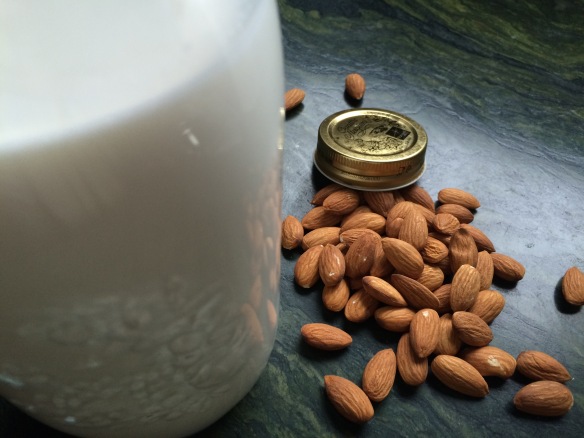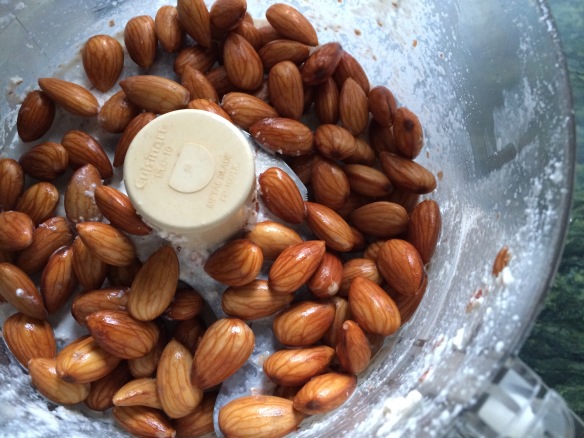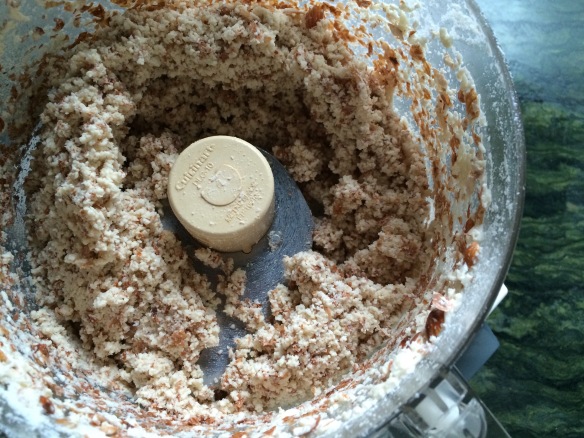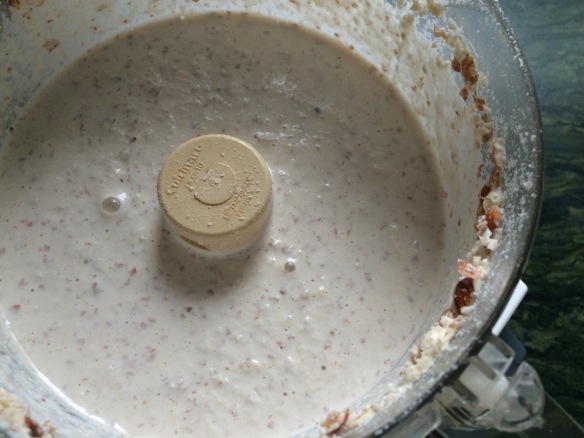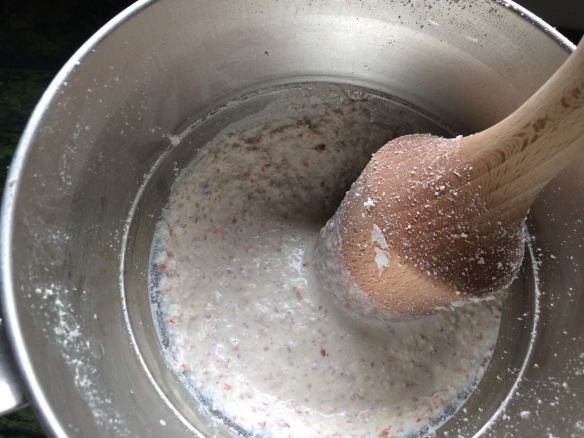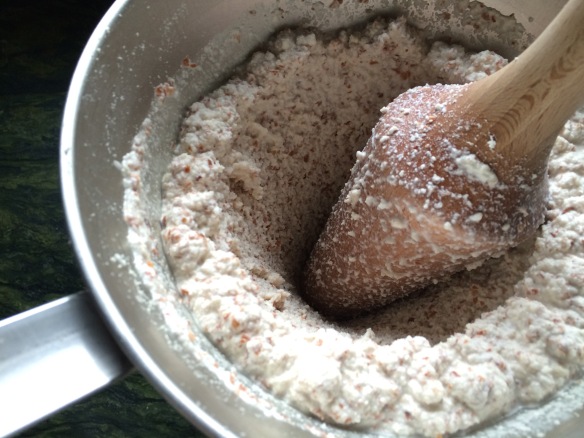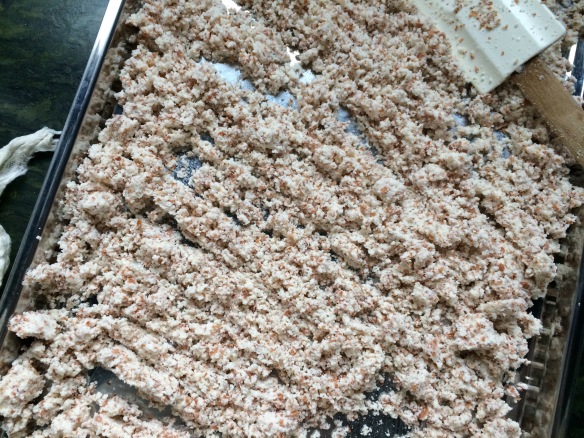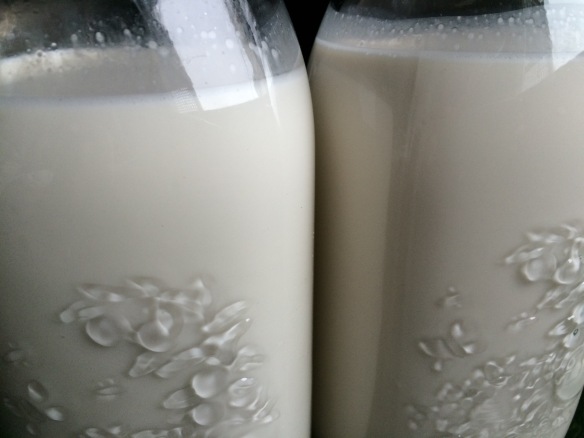On a snowy winter day, carrots had arrived from the farm, the smells of T’s morning espresso still permeated the air in the kitchen, I had just made fresh almond milk the day before…all the perfect ingredients to make a carrot cappuccino I thought.
 Ready to be enjoyed with some ribbon carrot chips as garnish and some cracked coriander seeds for a flavor twist.
Ready to be enjoyed with some ribbon carrot chips as garnish and some cracked coriander seeds for a flavor twist.
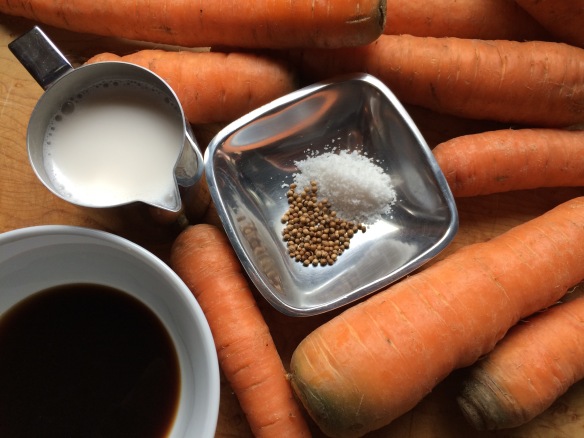 Ingredients:
Ingredients:
1 large bunch, about 1.2kg/2lbs10oz organic carrots
2 cups + 3 Tbsp homemade almond milk
4 Tbsp strong espresso
2 tsp coriander seeds
Coarse sea salt
Fleur de sel
Olive oil
Preheat oven to 350F
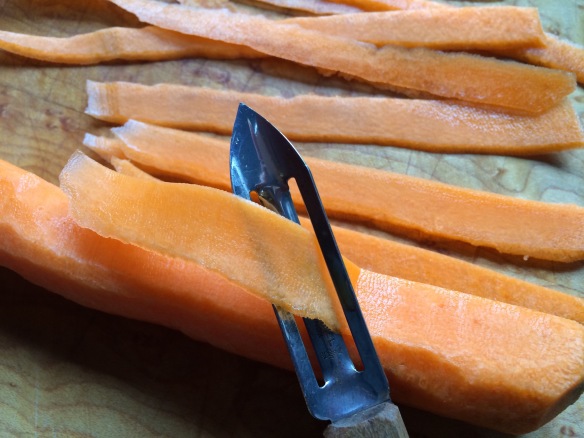 Peel the carrots. Continue peeling one of the carrots to create ribbons. Keep the center of the carrot to chop along with the bunch.
Peel the carrots. Continue peeling one of the carrots to create ribbons. Keep the center of the carrot to chop along with the bunch.
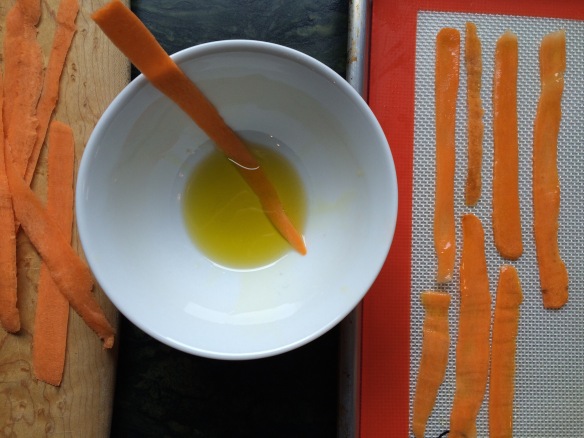 Place a little olive oil in a small bowl to coat the carrot ribbons. Place them on a Silpat on a cookie sheet. Bake for 10 minutes.
Place a little olive oil in a small bowl to coat the carrot ribbons. Place them on a Silpat on a cookie sheet. Bake for 10 minutes.
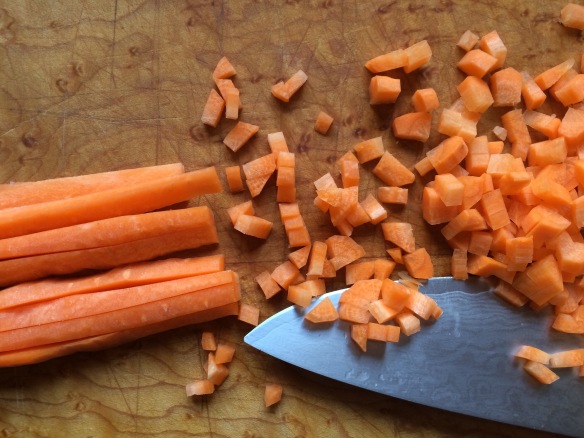 Meanwhile, chop the remaining carrots. If you prefer, you can grate them-they’ll cook even faster.
Meanwhile, chop the remaining carrots. If you prefer, you can grate them-they’ll cook even faster.
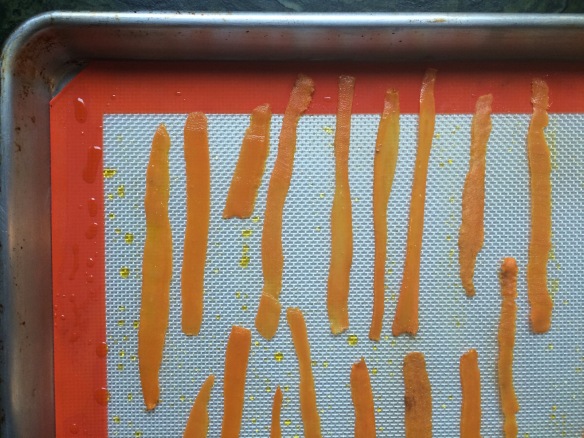 After 10 minutes, the carrot ribbons will have started to shrink. Flip them to the other side. Lower the heat to 300 and bake for another 15 minutes approximately.
After 10 minutes, the carrot ribbons will have started to shrink. Flip them to the other side. Lower the heat to 300 and bake for another 15 minutes approximately.
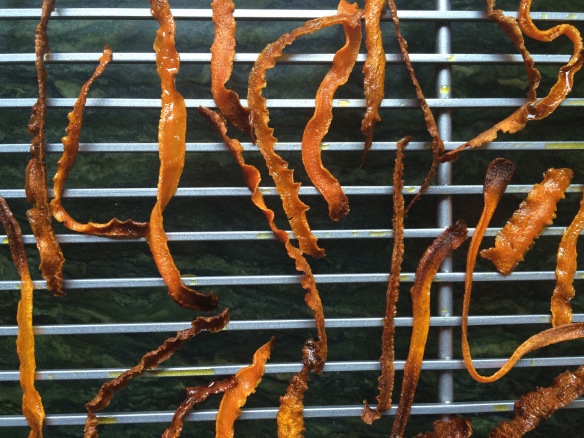 Once the carrot ribbons are baked into chips, set them on a wire rack to cool.
Once the carrot ribbons are baked into chips, set them on a wire rack to cool.
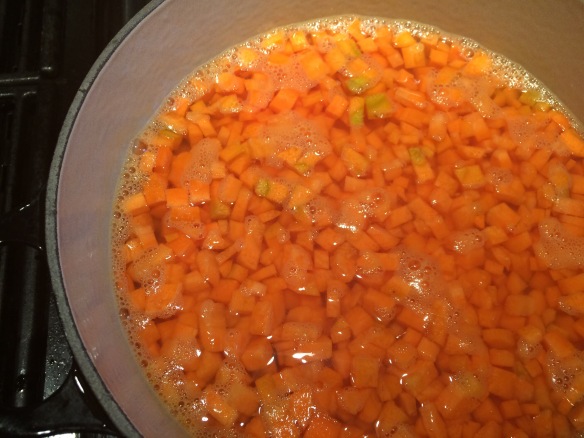 Bring 4 cups of water with a generous pinch of coarse salt to a boil. Place the chopped carrots in the boiling water and simmer for 15 minutes.
Bring 4 cups of water with a generous pinch of coarse salt to a boil. Place the chopped carrots in the boiling water and simmer for 15 minutes.
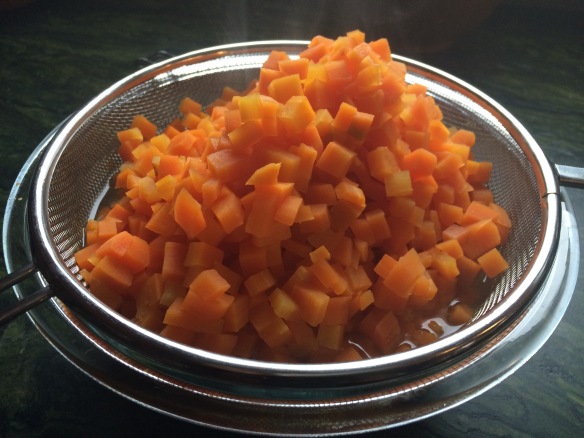 Drain the carrots over a bowl to save the cooking broth.
Drain the carrots over a bowl to save the cooking broth.
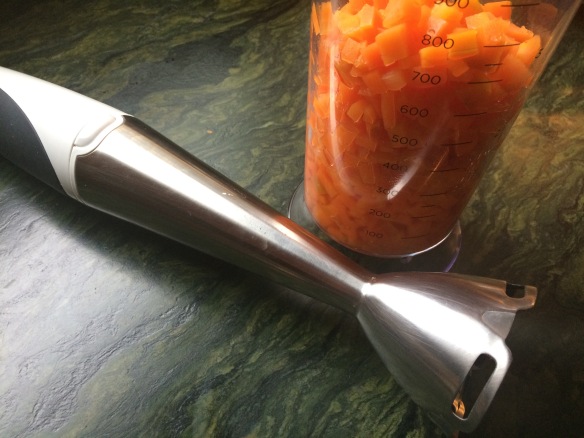 Place the carrots in the beaker of an immersion blender along with a few spoonfuls of cooking liquid.
Place the carrots in the beaker of an immersion blender along with a few spoonfuls of cooking liquid.
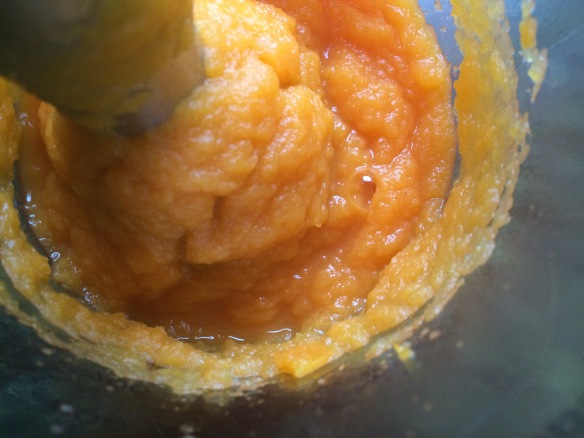 Purée the carrots using an immersion blender. You might have to do this in two batches depending on the size of your beaker.
Purée the carrots using an immersion blender. You might have to do this in two batches depending on the size of your beaker.
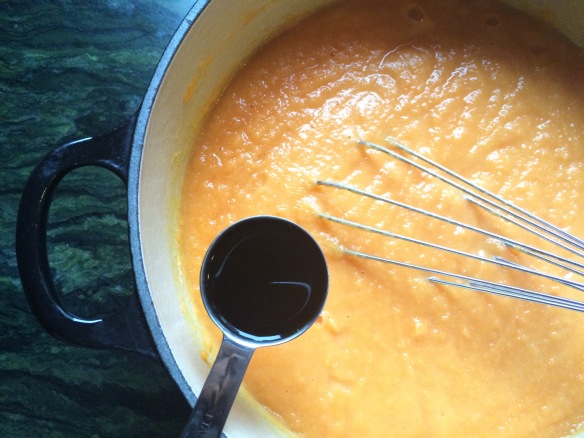 Place the puréed carrots back in the pot. Whisk in the almond milk and espresso. Heat gently to warm the mixture.
Place the puréed carrots back in the pot. Whisk in the almond milk and espresso. Heat gently to warm the mixture.
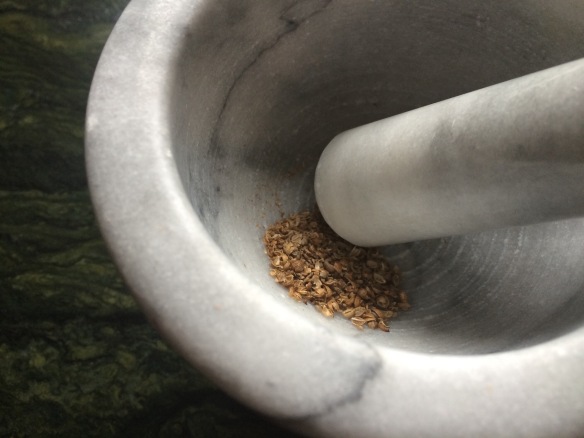 Crack the coriander seeds in a mortar and pestle.
Crack the coriander seeds in a mortar and pestle.
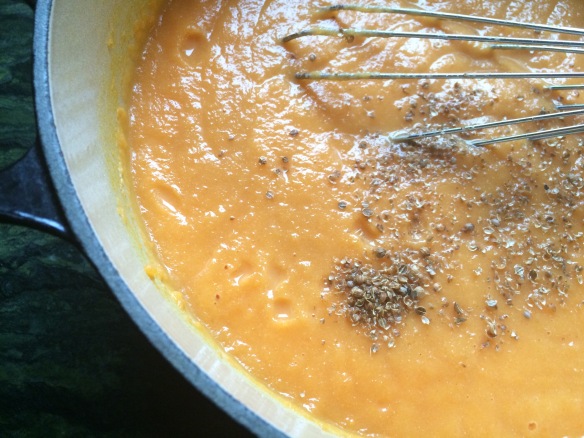 Mix 1 tsp of cracked coriander seeds into the carrot mixture and reserve the other tsp for serving.
Mix 1 tsp of cracked coriander seeds into the carrot mixture and reserve the other tsp for serving.
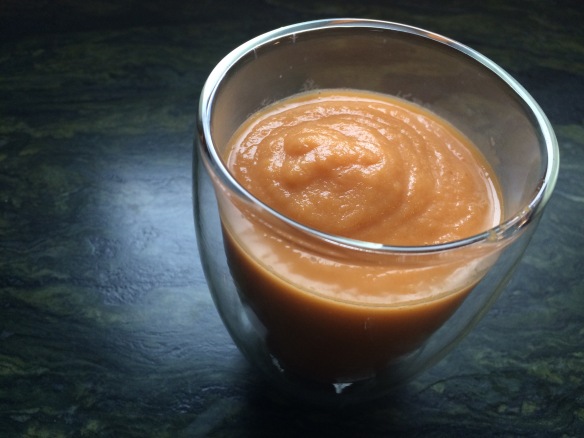 Pour into cappuccino serving glasses or cups.
Pour into cappuccino serving glasses or cups.
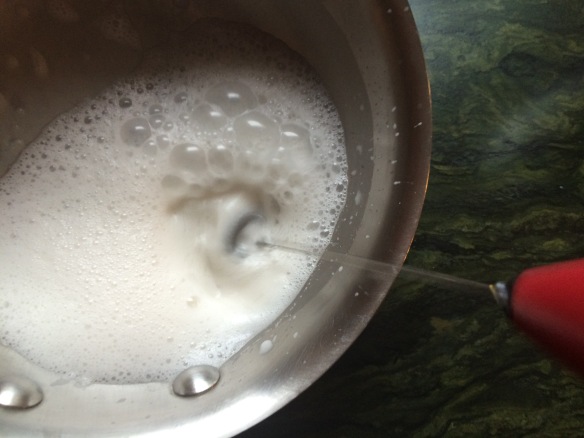 Gently warm the 3 Tbsp of almond milk remaining and froth using an electric frother.
Gently warm the 3 Tbsp of almond milk remaining and froth using an electric frother.
 Spoon the froth on top of the carrot mixture, garnish with some carrot chips, and sprinkle with cracked coriander and fleur de sel to taste. Enjoy!
Spoon the froth on top of the carrot mixture, garnish with some carrot chips, and sprinkle with cracked coriander and fleur de sel to taste. Enjoy!

